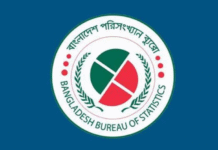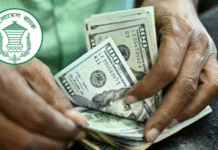Farmers in the country’s northern district have been forced to bear additional expenses to cultivate Aman paddy this season as the rainfall has not been adequate compared to last season.
Acknowledging the fact, officials at the Department of Agriculture Extension (DAE) said the lack of adequate rainfall in the region this season had pushed additional irrigational cost to around Tk175 crore.
Sources at the DAE said some Tk307 crore was spent as supplementary irrigation costs in the northern region in the last Aman season, whereas farmers now have to spend around Tk475 crore this season due to rainfall inadequacy.
Earlier, the DAE set a target to harvest more than 55 lakh metric ton of Aman rice in more than 20.69 lakh hectares of land in the region.
Talking to the Dhaka Tribune, Saiful Islam, a farmer from Baliadighi village of Shahajahanpur upazila, said in the last season he only had to pay around Tk300 once as a supplementary irrigation expense for cultivating Aman paddy on his 30 decimal piece of land.
However, DAE officials from 16 northern districts had initially estimated that supplementary irrigation costs will rise to Tk3,000 to Tk4,500 per hectare on an average, compared to last season.
When asked, DAE Deputy Director (Bogra) Chandi Das Kundu said around 16,715 mechanised irrigation machines, including 112 deep tube wells, have been operating in 12 upazilas in the district to tackle the drought situation, which had grown to almost double than the last year.
According to DAE’s Bogra office, 231 millimetres (mm) of rainfall was recorded in August last year whereas only 21mm of rainfall was recorded in the nine days of August this year.
At the same time, Bangladesh Water Development Board (BWDB) said only 129mm of rainfall on an average was recorded on July in Teesta, Brahmaputra and Dharla river basins, which was at 538mm last year.
Md Abul Kalam Azad, acting additional director of the DAE in Rajshahi, told the Dhaka Tribune that around 18 percent of Aman cultivable land in the division was now facing draught.
He also said apart from mechanised irrigation machines and traditional irrigation machines, farmers in his region were also using water from natural resources to meet their needs.
Source: Dhaka Tribune










